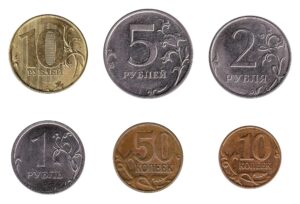This article is about currency units named ruble. For the Russian currency unit, see Russian ruble. For the ruble in the Soviet Union, foreign exchange russian rubles Soviet ruble.
Eastern Europe closely associated with the economy of Russia. Rubles were parts of the grivna or pieces of silver with notches indicating their weight. 1 grivna was split into four parts, which were called rubles. Others say the ruble was never part of a grivna but a synonym for it.
Therefore, the word ruble means “a cast with a seam”. A popular theory deriving the word ruble from rupee is probably not correct. The ruble was the Russian equivalent of the mark, a measurement of weight for silver and gold used in medieval Western Europe. The weight of one ruble was equal to the weight of one grivna. This name persists in the Mordvin word for ruble, целковой. The first kopek coins, minted at Novgorod and Pskov from about 1534 onwards, show a horseman with a spear.

Since the monetary reform of 1534, one Russian accounting ruble became equivalent to 100 silver Novgorod denga coins or smaller 200 Muscovite denga coins or even smaller 400 polushka coins. Exactly the former coin with a rider on it soon became colloquially known as kopek and was the higher coin until the beginning of the 18th century. Both the spellings ruble and rouble are used in English. The form rouble is preferred by the Oxford English Dictionary, but the earliest use recorded in English is the now completely obsolete robble.





